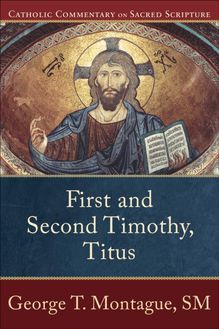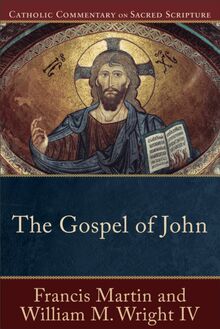Romans (Catholic Commentary on Sacred Scripture) , livre ebook
193
pages
English
Ebooks
2017
Vous pourrez modifier la taille du texte de cet ouvrage
Obtenez un accès à la bibliothèque pour le consulter en ligne En savoir plus
Découvre YouScribe en t'inscrivant gratuitement
Découvre YouScribe en t'inscrivant gratuitement
193
pages
English
Ebooks
2017
Vous pourrez modifier la taille du texte de cet ouvrage
Obtenez un accès à la bibliothèque pour le consulter en ligne En savoir plus
Publié par
Date de parution
07 novembre 2017
Nombre de lectures
1
EAN13
9781493411368
Langue
English
Poids de l'ouvrage
6 Mo
Publié par
Date de parution
07 novembre 2017
Nombre de lectures
1
EAN13
9781493411368
Langue
English
Poids de l'ouvrage
6 Mo
Cover
Series Page
Catholic Commentary on Sacred Scripture
S ERIES E DITORS
Peter S. Williamson
Mary Healy
A SSOCIATE E DITOR
Kevin Perrotta
C ONSULTING E DITORS
Scott Hahn , Franciscan University of Steubenville
†Daniel J. Harrington, SJ , Weston Jesuit School of Theology
William S. Kurz, SJ , Marquette University
†Francis Martin , Dominican House of Studies
Frank J. Matera , Catholic University of America
George Montague, SM , St. Mary’s University
Terrence Prendergast, SJ , Archbishop of Ottawa
Title Page
Copyright Page
© 2017 by Scott W. Hahn
Published by Baker Academic
a division of Baker Publishing Group
P.O. Box 6287, Grand Rapids, MI 49516-6287
www.bakeracademic.com
Ebook edition created 2017
Ebook corrections 11.09.2017
All rights reserved. No part of this publication may be reproduced, stored in a retrieval system, or transmitted in any form or by any means—for example, electronic, photocopy, recording—without the prior written permission of the publisher. The only exception is brief quotations in printed reviews.
Library of Congress Control Number: 2017021637
ISBN 978-1-4934-1136-8
Nihil obstat :
Reverend James M. Dunfee
Censor Librorum
Imprimatur :
Most Reverend Jeffrey M. Monforton
Bishop of Steubenville
January 25, 2017
The nihil obstat and imprimatur are official declarations that a book is free of doctrinal or moral error. No implication is contained therein that those who have granted the nihil obstat or imprimatur agree with the contents, opinions, or statements expressed.
Except as otherwise specified, Scripture versification and quotations are from the New American Bible, revised edition © 2010, 1991, 1986, 1970 Confraternity of Christian Doctrine, Washington, DC, and are used by permission of the copyright owner. All rights reserved. No part of the New American Bible may be reproduced in any form without permission in writing from the copyright owner.
Scripture quotations labeled ESV are from The Holy Bible, English Standard Version® (ESV®), copyright © 2001 by Crossway, a publishing ministry of Good News Publishers. Used by permission. All rights reserved. ESV Text Edition: 2011
Scripture quotations labeled RSV are from the Revised Standard Version of the Bible, copyright 1952 [2nd edition, 1971] by the Division of Christian Education of the National Council of the Churches of Christ in the United States of America. Used by permission. All rights reserved.
The image of the baptismal font in figure 5 is courtesy of the Israel Museum, Collection of the Israel Museum, Jerusalem, and courtesy of the Israel Antiquities Authority, exhibited at the Israel Museum, Jerusalem.
The image of Nero in figure 9 is courtesy of The Greek Ministry of Antiquities and the Ancient Corinth Archaeological Museum, Ancient Corinth, Greece.
Endorsements
“In this excellent volume, Scott Hahn and Curtis Mitch take what is arguably the most difficult book in the New Testament and certainly the most complex of Paul’s writings—the Letter to the Romans—and explain it clearly and convincingly. The result is both an accessible verse-by-verse commentary and a sometimes groundbreaking contribution to Pauline studies. The sidebars on patristic and medieval interpretation of controversial passages are by themselves worth the price of the book. If you are looking for a deeply exegetical and robustly Catholic perspective on Romans, then look no further.”
— Brant Pitre , Notre Dame Seminary, New Orleans
“Hahn and Mitch have written an understandable commentary with clear reasons for their interpretation of key questions in Romans. They have their eyes fully open to the issues that have challenged readers for two millennia, and they engage the reader’s mind and heart in order to sound the letter’s message more clearly to the Church today. This commentary is worthwhile reading for laypeople, clergy, and academics.”
— Mark Reasoner , Marian University Indianapolis
“Hahn and Mitch’s commentary on Romans is based on current historical studies within biblical scholarship, but they also regularly converse with theologians from throughout the centuries. Accordingly, exegetical positions are built on interaction with ancient sources such as the Dead Sea Scrolls and Josephus, but theological discussions engage a wide range of voices such as Origen, Augustine, Aquinas, the Catechism, and Pope Francis. Since it is Catholic in perspective and ecumenical in spirit, all will be rewarded for attending to this volume.”
— Ben C. Blackwell , Houston Baptist University
Dedication
To Matthew Levering—friend, colleague, and model scholar
I am gratified by the positive response to this Romans commentary that has required the publisher to order another printing, which affords the opportunity to correct a significant omission.
Curtis Mitch has been a good friend and close collaborator for over two decades. He’s worked extensively with me at the St. Paul Center for Biblical Theology on a number of projects, including this commentary. As the commentary project went forward, he became to me more than a collaborator; he became a coauthor.
I asked the publisher to acknowledge Curtis’s coauthorial role shortly before the book was first published, but was informed it was too late in the production process. I was displeased with this outcome at the time and have grown increasingly so since the commentary’s release. I am delighted that this printing presents an occasion to right that wrong in its inclusion of Curtis as the coauthor of the volume. And so it is, after nearly a quarter century of working with Curtis, that I once again find myself expressing my gratitude to him, this time for his patience and humility in accepting this overdue correction.
Contents
Cover i
Series Page ii
Title Page iii
Copyright Page iv
Endorsements v
Dedication vi
Illustrations viii
Editors’ Preface ix
Abbreviations xii
Introduction to Romans xv
Structure and Outline xxxi
The Messiah and the Gospel of Salvation (1:1–32) 1
The Judgment and the Law of God (2:1–29) 21
Judgment on Sin and Justification in Christ (3:1–31) 36
The Faith and Fatherhood of Abraham (4:1–25) 56
Reconciliation in Christ the New Adam (5:1–21) 72
New Life and Liberation in the Messiah (6:1–23) 92
The Law of Moses and the Law of Sin (7:1–25) 109
The Law of the Spirit and the Love of God (8:1–39) 125
God’s Faithfulness to Israel (9:1–33) 149
Israel’s Response to the Gospel (10:1–21) 172
God’s Mercy for All (11:1–36) 187
A New Way of Worship and Life in Christ (12:1–21) 211
Faithful Citizenship and Fulfillment of the Law (13:1–14) 226
The Weak and the Strong in Rome (14:1–23) 241
Paul’s Final Appeal and Future Plans (15:1–33) 257
The Conclusion to Romans (16:1–27) 276
Suggested Resources 291
Glossary 294
Index of Pastoral Topics 297
Index of Sidebars 299
Back Cover 300
Illustrations
Figure 1. The Roman-period synagogue at Sardis xvii
Figure 2. Statue of the Ephesian Artemis 16
Figure 3. The Last Judgment by Michelangelo 25
Figure 4. The ark of the covenant 47
Figure 5. Baptismal font from the Byzantine period 94
Figure 6. Torah scroll 117
Figure 7. Mount Sinai (Jebel Musa) 155
Figure 8. Olive trees on the Mount of Olives 199
Figure 9. Bust of Nero 228
Figure 10. Map of the Mediterranean world from Jerusalem to Spain 269
Figure 11. Fragment of P 49 containing Rom 16:14–23 282
Editors’ Preface
The Church has always venerated the divine Scriptures just as she venerates the body of the Lord. . . . All the preaching of the Church should be nourished and governed by Sacred Scripture. For in the sacred books, the Father who is in heaven meets His children with great love and speaks with them; and the power and goodness in the word of God is so great that it stands as the support and energy of the Church, the strength of faith for her sons and daughters, the food of the soul, a pure and perennial fountain of spiritual life.
Second Vatican Council, Dei Verbum 21
Were not our hearts burning [within us] while he spoke to us on the way and opened the scriptures to us?
Luke 24:32
The Catholic Commentary on Sacred Scripture aims to serve the ministry of the Word of God in the life and mission of the Church. Since Vatican Council II, there has been an increasing hunger among Catholics to study Scripture in depth and in a way that reveals its relationship to liturgy, evangelization, catechesis, theology, and personal and communal life. This series responds to that desire by providing accessible yet substantive commentary on each book of the New Testament, drawn from the best of contemporary biblical scholarship as well as the rich treasury of the Church’s tradition. These volumes seek to offer scholarship illumined by faith, in the conviction that the ultimate aim of biblical interpretation is to discover what God has revealed and is still speaking through the sacred text. Central to our approach are the principles taught by Vatican II: first, the use of historical and literary methods to discern what the biblical authors intended to express; second, prayerful theological reflection to understand the sacred text “in accord with the same Spirit by whom it was written”—that is, in light of the content and unity of the whole Scripture, the living tradition of the Church, and the analogy of faith ( Dei Verbum 12).
The Catholic Commentary on Sacred Scripture is written for those engaged in or training for pastoral ministry and others interested in studying Scripture to understand their faith more deeply, to nourish their spiritual life, or to share the good news with others. With this in mind, the authors focus on the meaning of the text for faith and life rather than on the technical questions that occupy scholars, and they explain the Bible in ordinary language that does not require translation for preaching and catechesis. Although this series is written from the perspective of Catholic faith, its authors draw on the interpr











